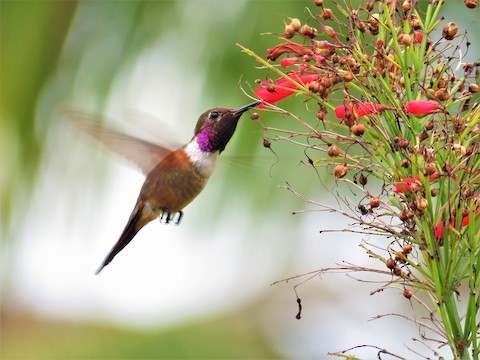Birdfinding.info ⇒ Common across much of its range; more so on islands where Cuban Emerald is uncommon or absent. It is especially easy to find on New Providence in parks and gardens, such as The Retreat. On Grand Bahama, it can usually be found within Freeport at Garden of the Groves. On Abaco, it is found most often at the southern end of the island around the entrance to Abaco National Park. In Turks & Caicos, it is generally common on Providenciales.
Bahama Woodstar
Nesophlox evelynae
Endemic to the Bahamas and Turks & Caicos from Grand Bahama to Grand Turk. Occurs on all the major islands and many smaller cays, but absent from the Inaguas, where the Inagua Woodstar occurs instead.
Has a history of wandering to the U.S., with at least five documented records from Florida and an extraordinary record from Pennsylvania.
Identification
A small, slender hummingbird with a thin, slightly downcurved bill and variably rusty, cinnamon, or buffy underparts.
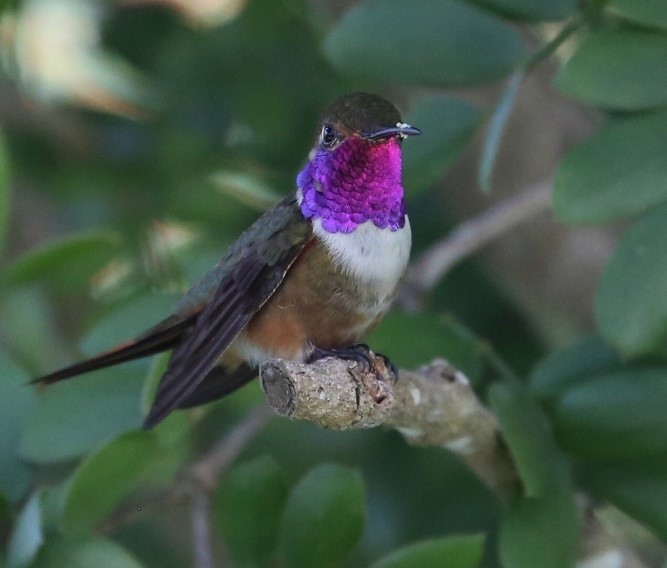
Bahama Woodstar, male with gorget showing as purple and rose-pink. (New Providence, Bahamas; January 12, 2015.) © marthar
Adult males have a purple to rose gorget and long, deeply forked, black-and-cinnamon striped tail.
The gorget is black in low light and in strong light its iridescent glow can vary from deep violet to pale pink.
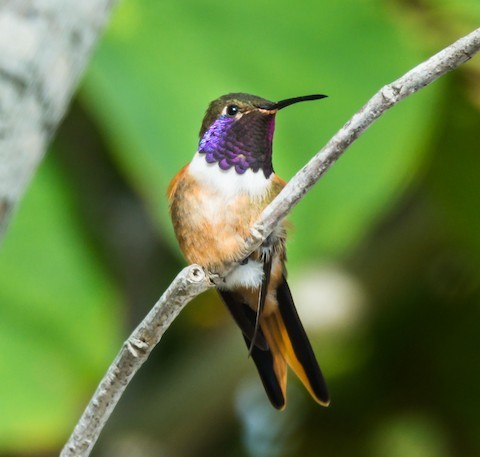
Bahama Woodstar, male with gorget showing as purple—note black and cinnamon stripes on tail. (La Bougainvillea, Eleuthera, Bahamas; April 10, 2019.) © Jim Merritt
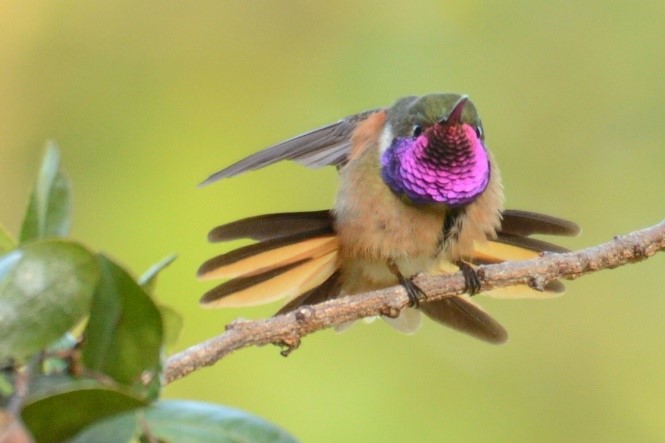
Bahama Woodstar, male with gorget showing as pink—note the black and cinnamon stripes on the tail. (Nassau, New Providence, Bahamas; February 25, 2014.) © jvp0208
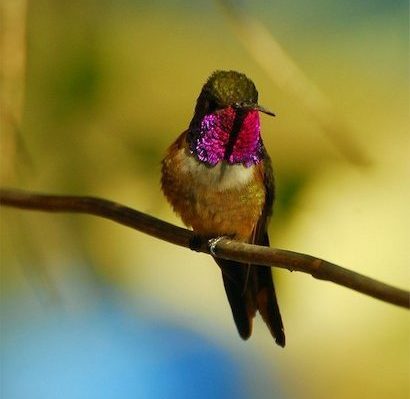
Bahama Woodstar, male with gorget showing as rose-pink. (The Retreat, New Providence, Bahamas; February 11, 2014.) © Bob Zaremba
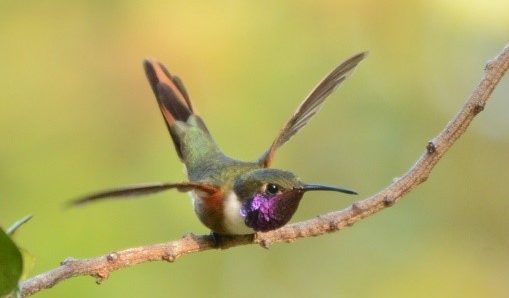
Bahama Woodstar, male with gorget showing as pink—note black and cinnamon striped tail. (Nassau, New Providence, Bahamas; February 25, 2014.) © jvp0208
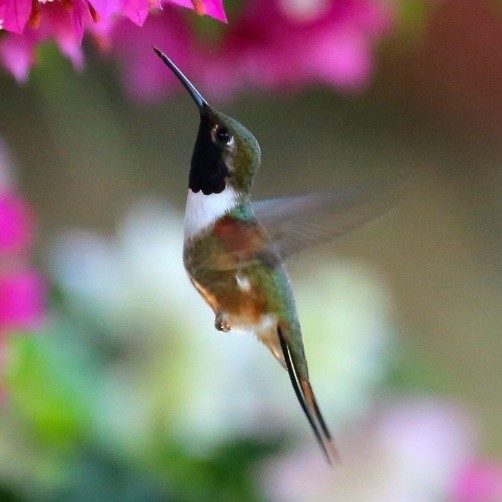
Bahama Woodstar, male with gorget showing as black—note the rufous shoulder patch. (New Providence, Bahamas; January 10, 2015.) © marthar
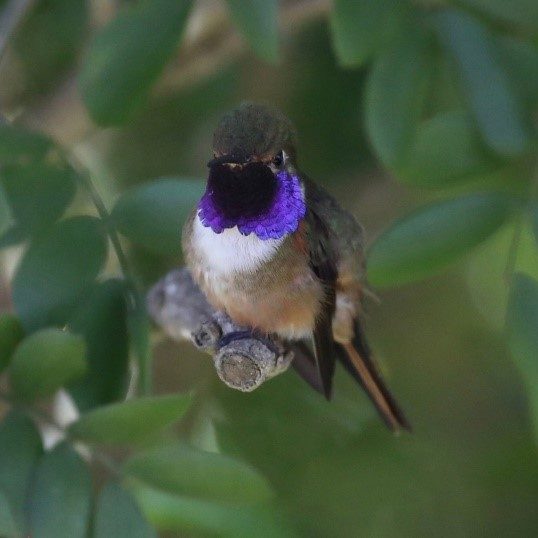
Bahama Woodstar, male with gorget showing as violet. (New Providence, Bahamas; February 12, 2015.) © marthar
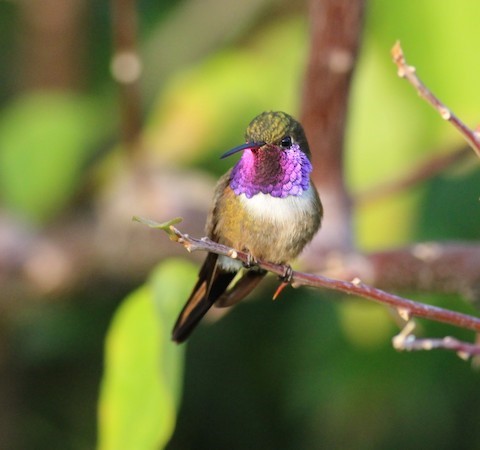
Bahama Woodstar, male with gorget showing as pink. (Banks Road, Eleuthera, Bahamas; December 25, 2015.) © Jamie Adams
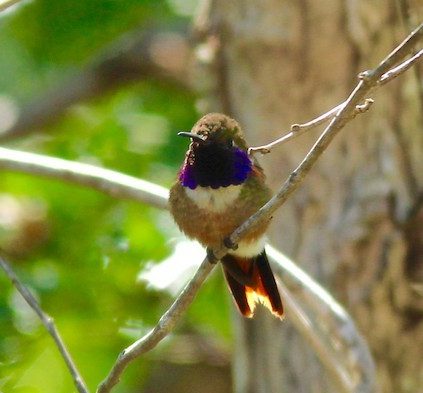
Bahama Woodstar, male with gorget showing as violet. (Leon Levy Native Plant Perserve, Eleuthera, Bahamas; March 17, 2018.) © Stuart White
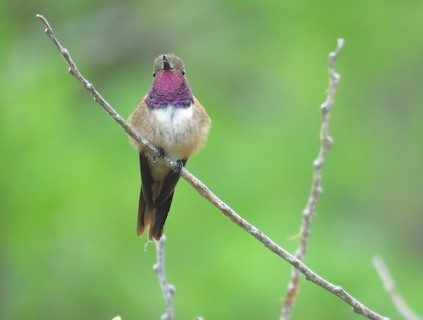
Bahama Woodstar, male with gorget showing as purple and pink. (Rainbow Bay, Eleuthera, Bahamas; May 9, 2018.) © John Mackin
The male’s underparts can be either buffy or rusty, with a broad white crescent across the chest.
Small, rufous patches under the base of the wings are often prominent in flight, but usually concealed at rest.
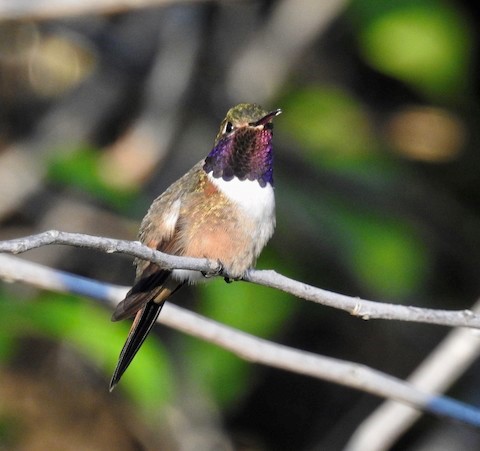
Bahama Woodstar, male with gorget showing as purple, and buffy underparts. (Garden of the Gates, Grand Bahama; February 28, 2019.) © Erika Gates
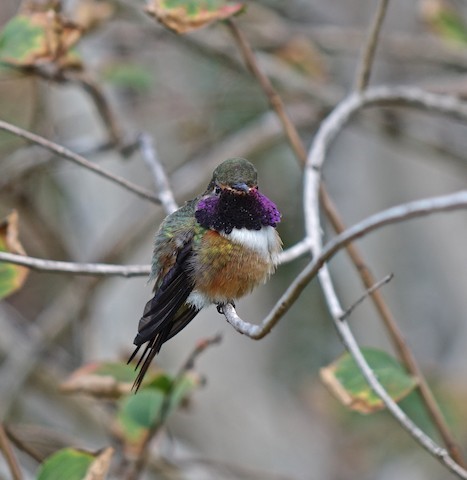
Bahama Woodstar, male with gorget showing as violet, and cinnamon underparts. (New Providence, Bahamas; January 5, 2018.) © Pavia Antonas
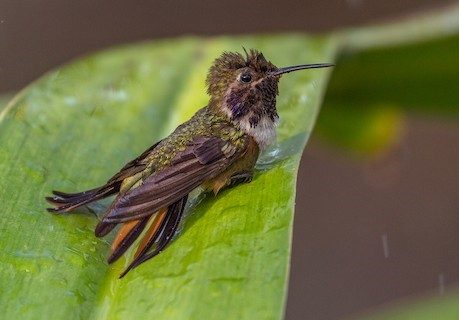
Bahama Woodstar, male showing golden-green upperparts, and black and cinnamon striped tail. (Madeira, Hartswell, Great Exuma, Bahamas; March 11, 2019.) © Lorraine Minns
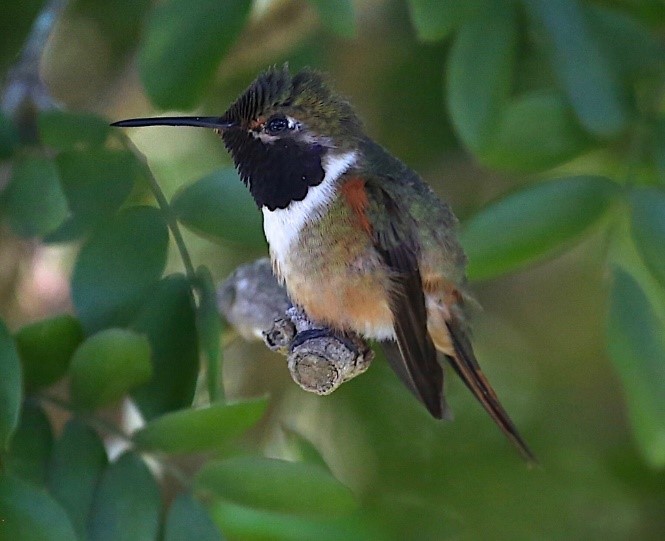
Bahama Woodstar, male with gorget showing as black—note the rufous shoulder patch. (New Providence, Bahamas; February 12, 2015.) © marthar
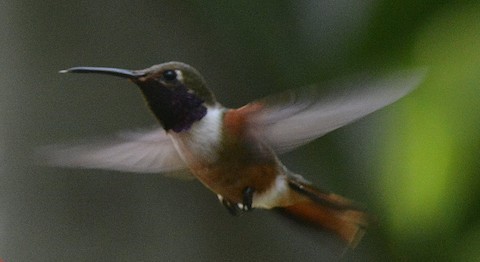
Bahama Woodstar, male showing extensively rusty underparts. (The Retreat, New Providence, Bahamas; March 30, 2016.) © Robert Norton

Bahama Woodstar, male with rufous underparts. (Garden of the Groves, Grand Bahama; September 30, 2017.) © Erika Gates
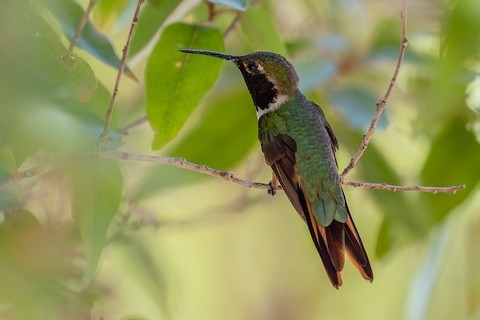
Bahama Woodstar, male—note green upperparts and deeply forked tail. (Madeira, Hartswell, Great Exuma, Bahamas; March 11, 2019.) © Lorraine Minns
Females and immature males are somewhat nondescript, but usually show a muted version of the male’s body plumage: a buffy vest, white crescent on the chest, and rusty patches under the base of the wings, mainly visible in flight.
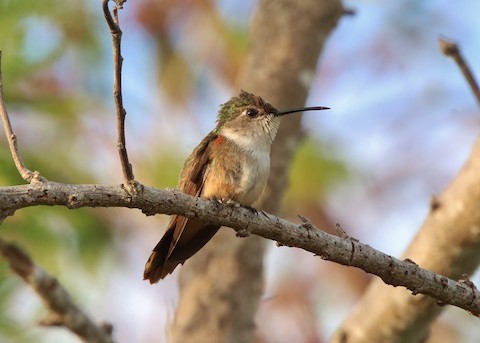
Bahama Woodstar, female showing muted underparts. (George Town, Exuma, Bahamas; April 20, 2019.) © Mark Gallagher
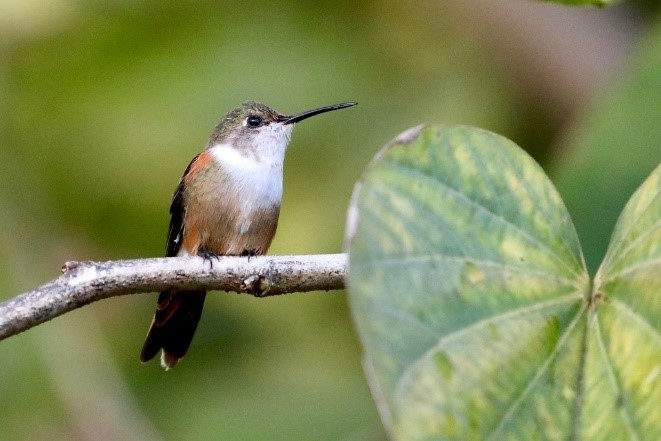
Bahama Woodstar, female with a plain vest—note rusty shoulder patches. (New Providence, Bahamas; February 3, 2018.) © marthar
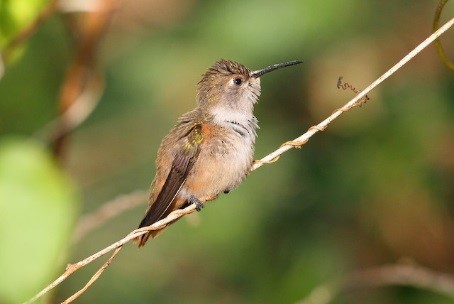
Bahama Woodstar, female—nondescript, but note rusty shoulder patches. (New Providence, Bahamas; February 14, 2014.) © Paul Lewis
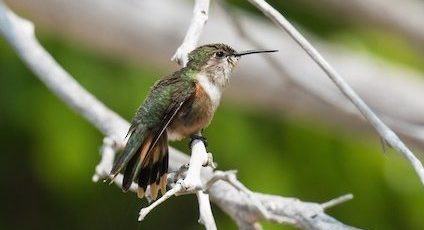
Bahama Woodstar, female or immature male showing tail pattern. (Hummingbird Cay, Bahamas; March 20, 2018.) © Nick Dorian
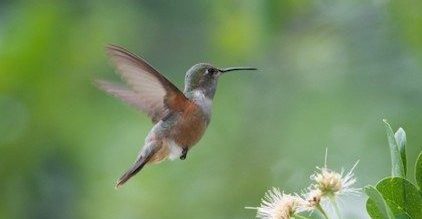
Bahama Woodstar, female or immature male showing dark gray throat and rusty vest with rusty shoulder patches. (Little Stirrup Cay, Berry Islands, Bahamas; January 13, 2018.) © Gary Brunvoll
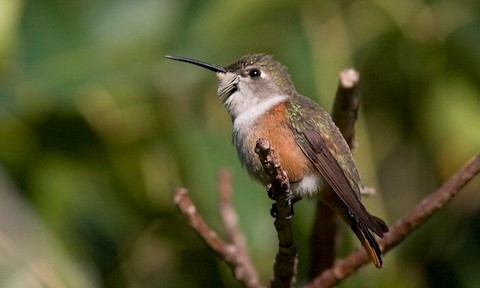
Bahama Woodstar, female showing a cinnamon vest. (Elbow Cay, Andros, Bahamas; November 22, 2006.) © Brian Sullivan
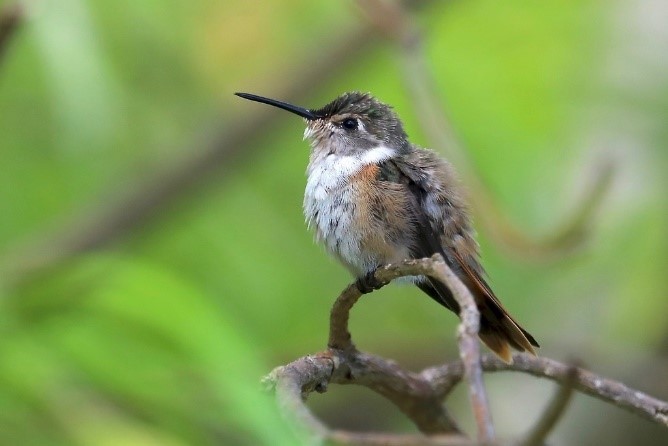
Bahama Woodstar, female with buffy sides but otherwise white underparts. (New Providence, Bahamas; April 6, 2019.) © marthar
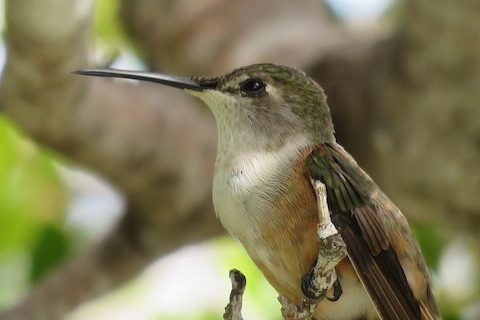
Bahama Woodstar, female with a cinnamon vest. (Highborne Cay, Bahamas; June 10, 2018.) © Jeanne Kaufman
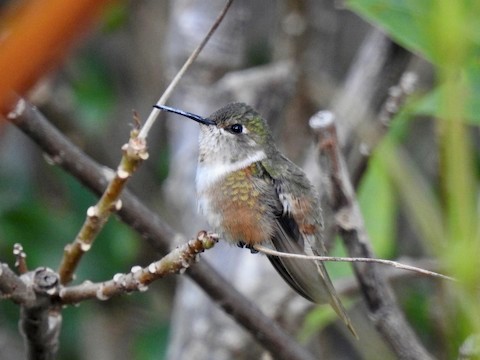
Bahama Woodstar, female or immature male showing rusty vest. (Garden of the Gates, Grand Bahama; February 8, 2019.) © Erika Gates
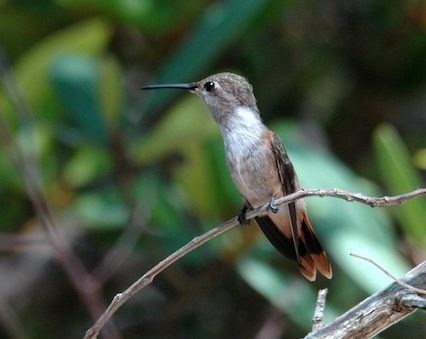
Bahama Woodstar, immature male. (Kamalame Cay, North Andros, Bahamas; April 2, 2012.) © Timothy Spahr
The female’s tail is rounded at the corners. Its pattern is distinctive: the three outer feathers are mostly cinnamon at the base and tips, with a black band in the middle.
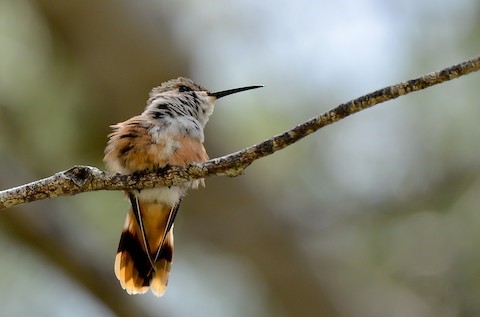
Bahama Woodstar, female with a cinnamon vest, showing tail pattern. (Spanish Wells, George Island, Bahamas; June 11, 2015.) © Erik Martin
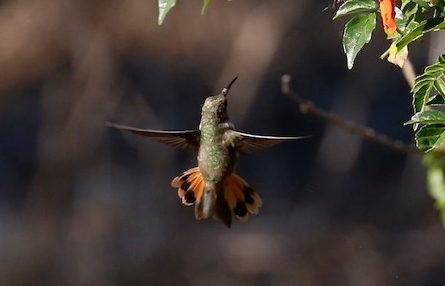
Bahama Woodstar, female or immature male showing tail pattern. (Maritime Hammock Sanctuary, Marks Landing, Florida; May 16, 2017.) © Laura Keene
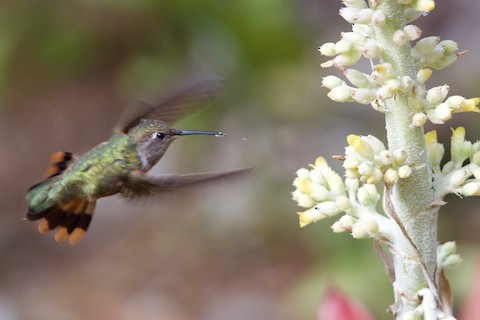
Bahama Woodstar, female or immature male showing tail pattern. (Ardastra Gardens, New Providence, Bahamas; January 6, 2018.) © Dan Haas
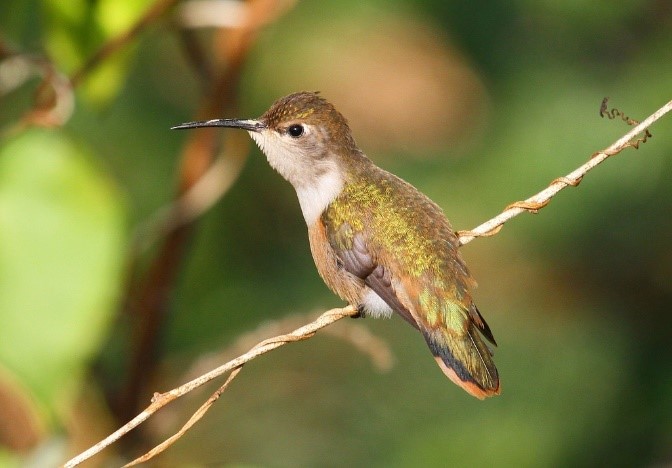
Bahama Woodstar, female showing round tail. (New Providence, Bahamas; February 14, 2014.) © Paul Lewis
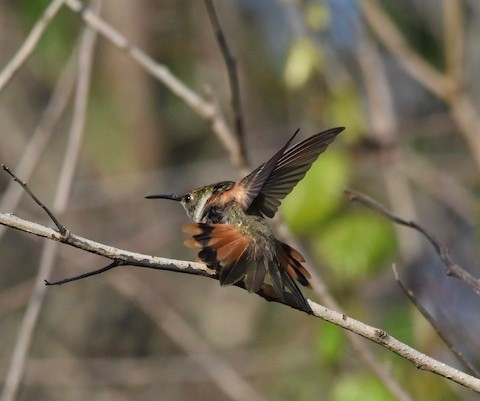
Bahama Woodstar, female or immature male showing tail pattern. (Maritime Hammock Sanctuary, Marks Landing, Florida; May 17, 2017.) © Lizabeth Southworth
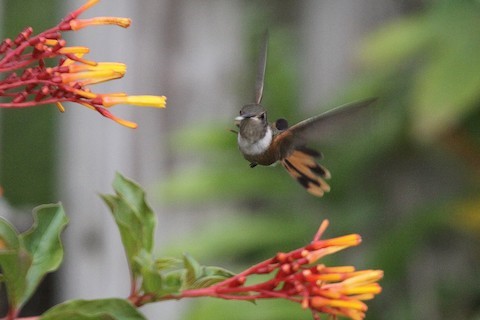
Bahama Woodstar, female or immature male showing tail pattern. (Garden of the Gates, Grand Bahama; May 26, 2018.) © Tom Moxley
Cf. Rufous and Allen’s Hummingbirds. Female and immature male Bahama Woodstars that stray to the U.S. are most likely to be confused with females of the western Selasphorus species, which regularly stray to the eastern U.S. The clearest objective difference is in the color of the outer tail feathers: white-tipped on the Selasphorus species, and cinnamon-tipped on Bahama Woodstar.
Notes
Monotypic species. Traditionally considered conspecific with Inagua Woodstar, but differences in morphology, vocalizations, mechanical sounds, and genetics support recognition as a separate species.
References
eBird. 2019. eBird: An online database of bird distribution and abundance. Cornell Lab of Ornithology, Ithaca, N.Y. http://www.ebird.org. (Accessed August 9, 2019.)
Feo, T.J., J.M. Musser, J. Berv, and C.J. Clark. 2015. Divergence in morphology, calls, song, mechanical sounds, and genetics supports species status for the Inaguan hummingbird (Trochilidae: Calliphlox “evelynae” lyrura). Auk 132:248-264.
Fogden, M., M. Taylor, and S.L. Williamson. 2014. Hummingbirds: A Life-size Guide to Every Species. HarperCollins, New York.
Howell, S.N.G., I. Lewington, and W. Russell. 2014. Rare Birds of North America. Princeton University Press, Princeton, N.J.
Schuchmann, K.L., G.M. Kirwan, and E. de Juana. 2019. Bahama Hummingbird (Nesophlox evelynae). In Handbook of the Birds of the World Alive (J. del Hoyo, A. Elliott, J. Sargatal, D.A. Christie, and E. de Juana, eds.). Lynx Edicions, Barcelona. https://www.hbw.com/node/55645. (August 9, 2019.)
Raffaele, H., J. Wiley, O. Garrido, A. Keith, and J. Raffaele. 1998. A Guide to the Birds of the West Indies. Princeton University Press, Princeton, N.J.
